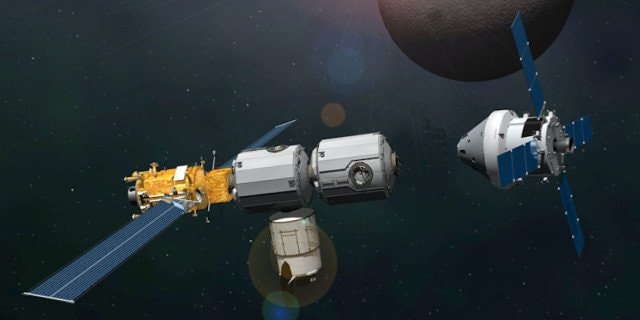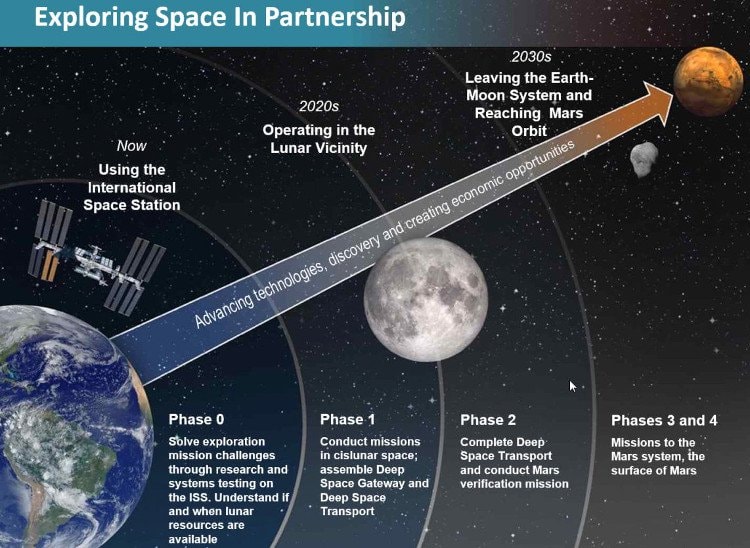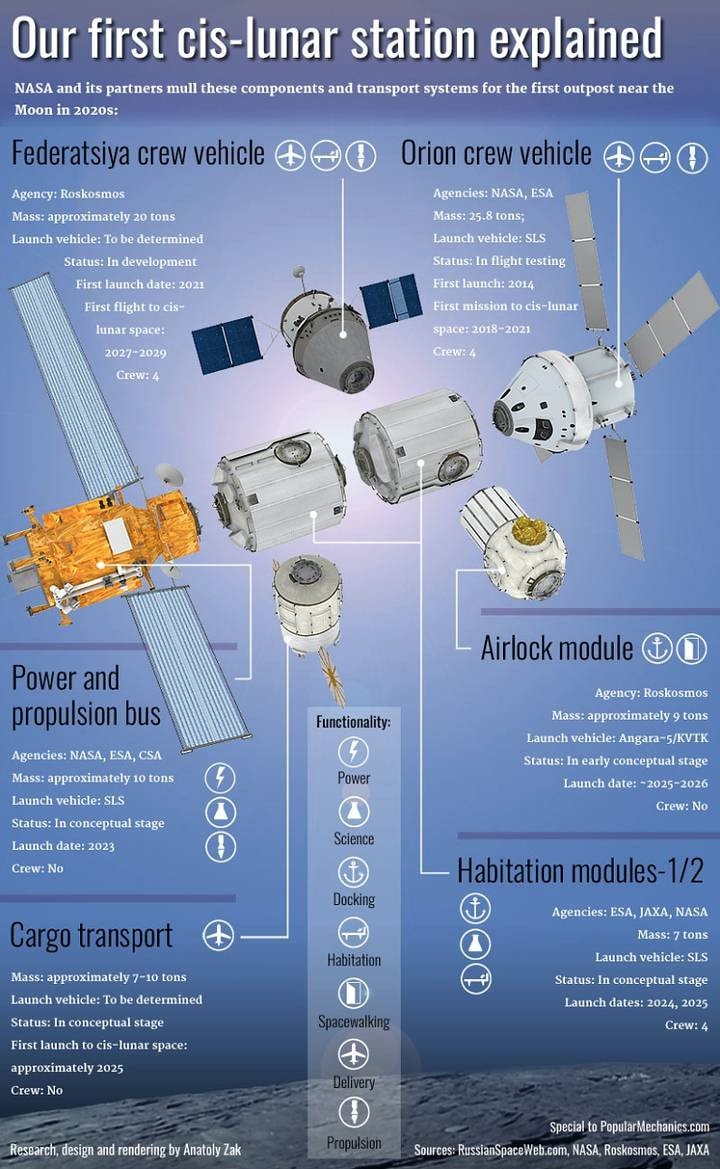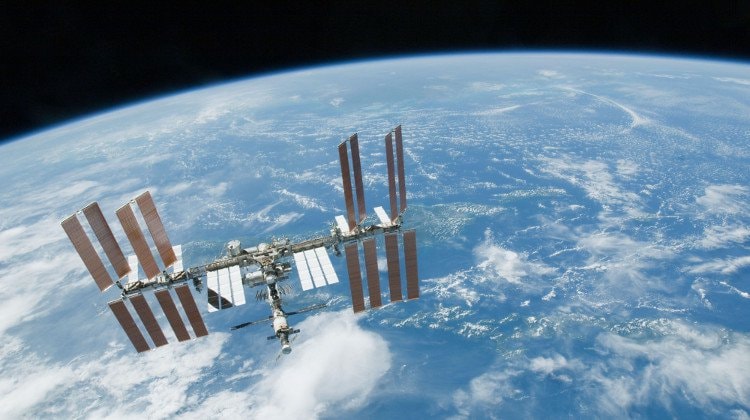The International Space Station ISS is about to end its historic mission.
NASA and its international partners are taking steps to build humanity's new home in space.
In the new space era of mankind, space agencies are constantly building new structures in space to support human journeys to distant planets. The future space station that NASA plans will be a stepping stone for this process.
Many ideas for new space stations have been put forward. The most notable is the idea of a space station moving in the orbit of the Moon, which would be a transit station for human missions to more distant planets without having to return to Earth.
 |
| NASA is planning to build a space station that will orbit the Moon. |
The new space station is designed to be egg-shaped, measuring between 1,500km and 70,000km, and will be sent straight to the Moon in a single launch from Earth.
NASA engineers and their colleagues from four other space agencies have been working on the project for years. But it has been classified, unreleased to the public and unsubmitted to government officials.
If all goes according to plan, the project will launch in 2023. First, a bus-shaped robot called PPB will be launched and orbit the Moon. Two years later, a pair of cylindrical modules measuring 4.5 meters wide and 5 meters long, weighing no more than 10 tons, will be launched and docked with PPB.
And finally, over the next 90 days, they'll bring up the astronaut-designed home and connect it all together. Additionally, a Russian-made airlock module will be added in the mid-2020s to make spacewalks much easier for astronauts.
 |
| Next steps in the grand mission to send humans to Mars in the 2030s. |
On the outside, both modules will be covered with a thick layer of material and a heat sink that is twice as efficient as the anti-meteorite armor, and have four connection ports so that they can be connected together for future space station docking missions.
The lunar orbital region has less space debris than Earth's orbit, so engineers will consider designing thinner walls that won't have to withstand as much impact.
Inside, everything is meticulously designed to minimize weight and maximize space. The dining table folds away after meals, and the sleeping compartment can be inflated or deflated as needed. The refrigerator doubles as a kitchen appliance and a storage space for scientific specimens.
 |
| All the modules and equipment were assembled to create the first space station to orbit the Moon. |
Meanwhile, transportation to the station remains a matter of debate. Each crew will be transported to different points of the station as it orbits the Moon by a dedicated vehicle, but whether that will be a private company or a government organization is yet to be determined.
The ultimate goal of this ambitious project is a year-long space expedition straight to Mars. To make this happen, NASA needs a brand new 20-ton rocket by the second half of the 2020s.
 |
| The International Space Station (ISS) will end its 30-year history in the late 2020s. |
Regardless, the ISS is nearing the end of its historic 30-year mission. The decommissioning of the space station will close a chapter in the history of human exploration, but it will also open a new era with many promising aspects for NASA and its partners to exploit.
According to Khoahoc.tv








